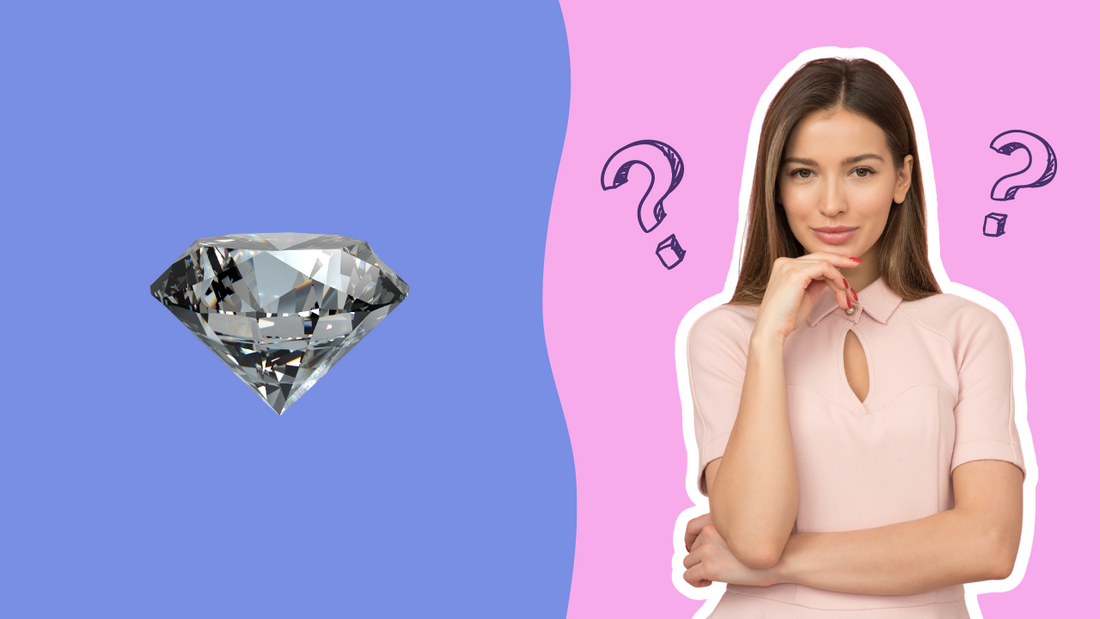Why do we use diamonds to test gemstones?
Diamonds are used to test various gemstones like Sapphires and rubies, emeralds, topaz, Garnet and more

Diamonds are used to test a variety of gemstones, primarily to assess their hardness, thermal conductivity, and other distinguishing properties. Here are some of the gemstones that are commonly tested using diamonds:
1. Corundum Family (Sapphire and Ruby)
- Sapphire: Both blue sapphires and other colored varieties.
- Ruby: The red variety of corundum.
Corundum is the second hardest natural mineral, rated 9 on the Mohs scale. Diamonds, being rated 10, can scratch corundum, confirming its hardness.

2. Beryl Family
- Emerald: The green variety of beryl.
- Aquamarine: The blue or turquoise variety.
- Morganite: The pink variety.
Beryl gemstones are rated 7.5 to 8 on the Mohs scale, and testing them with a diamond can help verify their hardness and differentiate them from softer stones.
3. Quartz Family
- Amethyst: The purple variety of quartz.
- Citrine: The yellow to brownish-orange variety.
- Rose Quartz: The pink variety.
Quartz is rated 7 on the Mohs scale. Using a diamond to test quartz helps confirm its hardness and distinguish it from similar-looking but softer stones.
4. Topaz
Topaz is rated 8 on the Mohs scale. Testing topaz with a diamond can confirm its hardness and help differentiate it from other stones with similar appearances but different hardness levels.

5. Spinel
Spinel is rated 7.5 to 8 on the Mohs scale. Testing it with a diamond can confirm its hardness and authenticity, as spinel can sometimes be confused with ruby and sapphire due to its similar appearance.
6. Garnet
Garnets range from 6.5 to 7.5 on the Mohs scale. Using a diamond to test garnet helps verify its hardness and distinguish it from other gemstones with similar colors but different hardness levels.
7. Tourmaline
Tourmaline is rated 7 to 7.5 on the Mohs scale. Testing it with a diamond can help confirm its hardness and differentiate it from other similar-looking stones.

8. Zircon
Zircon is rated 6.5 to 7.5 on the Mohs scale. Diamonds can scratch zircon, verifying its hardness and distinguishing it from diamond simulants like cubic zirconia, which is often confused with real zircon.
9. Peridot
Peridot is rated 6.5 to 7 on the Mohs scale. Testing it with a diamond can confirm its hardness and help differentiate it from other green gemstones.
Using diamonds to test other gemstones primarily serves as a means of verification and comparison due to diamonds' unique properties. Here are the key reasons why diamonds are used in testing gemstones:
1. Hardness
Diamonds are the hardest known natural material, rated 10 on the Mohs scale of mineral hardness. This makes them an ideal standard for testing the hardness of other gemstones. By scratching a gemstone with a diamond, gemologists can determine its hardness level, helping to confirm its identity and authenticity.
2. Thermal Conductivity
Diamonds have exceptional thermal conductivity, which is significantly higher than most other gemstones. Gem testers use this property to distinguish diamonds from imitations and other gemstones. When a gemstone is tested with a thermal conductivity tester, diamonds will exhibit a distinct response compared to other stones, aiding in accurate identification.
3. Optical Properties
Diamonds possess unique optical properties, such as high refractive index and dispersion, which contribute to their brilliance and fire. By comparing these optical characteristics, gemologists can differentiate diamonds from similar-looking gemstones like moissanite or cubic zirconia. Special tools and tests can highlight these differences, confirming whether a stone is a diamond or an imitation.
4. Chemical Composition
Diamonds are made of pure carbon arranged in a crystal lattice, giving them distinct chemical properties. Advanced testing techniques, like spectroscopy, can analyze the chemical composition of gemstones. Comparing a stone's chemical makeup to that of a diamond helps in identifying synthetic or treated gemstones versus natural ones.
5. Inclusions and Flaws
Diamonds often contain unique inclusions and flaws that are studied under magnification. Comparing these internal features with those of other gemstones can help in identifying and authenticating stones. Inclusions can also indicate whether a gemstone is natural or synthetic.
6. Market Standard
Diamonds are considered the gold standard in the gemstone industry. They are often used as a benchmark for evaluating the quality, cut, and value of other gemstones. Comparing gemstones to diamonds in terms of clarity, cut, and brilliance provides a consistent and reliable standard in the gem trade.
---------
Also you can buy high quality gemstones of various ratti at affordable prices from Vedic Crystals
For more information about Vedic Crystals and our range of gemstones and rudraksha beads, visit Vedic Crystals website or contact us at contactus@vediccrystals.com/ +91-9811809967 (Whatsapp).
Also if you found this article useful , please share it with someone who might need it.
Moreover, in case you want a additional 5% discount coupon on our entire range of gemstones and Rudraksha : Please comment "Interested" below.






